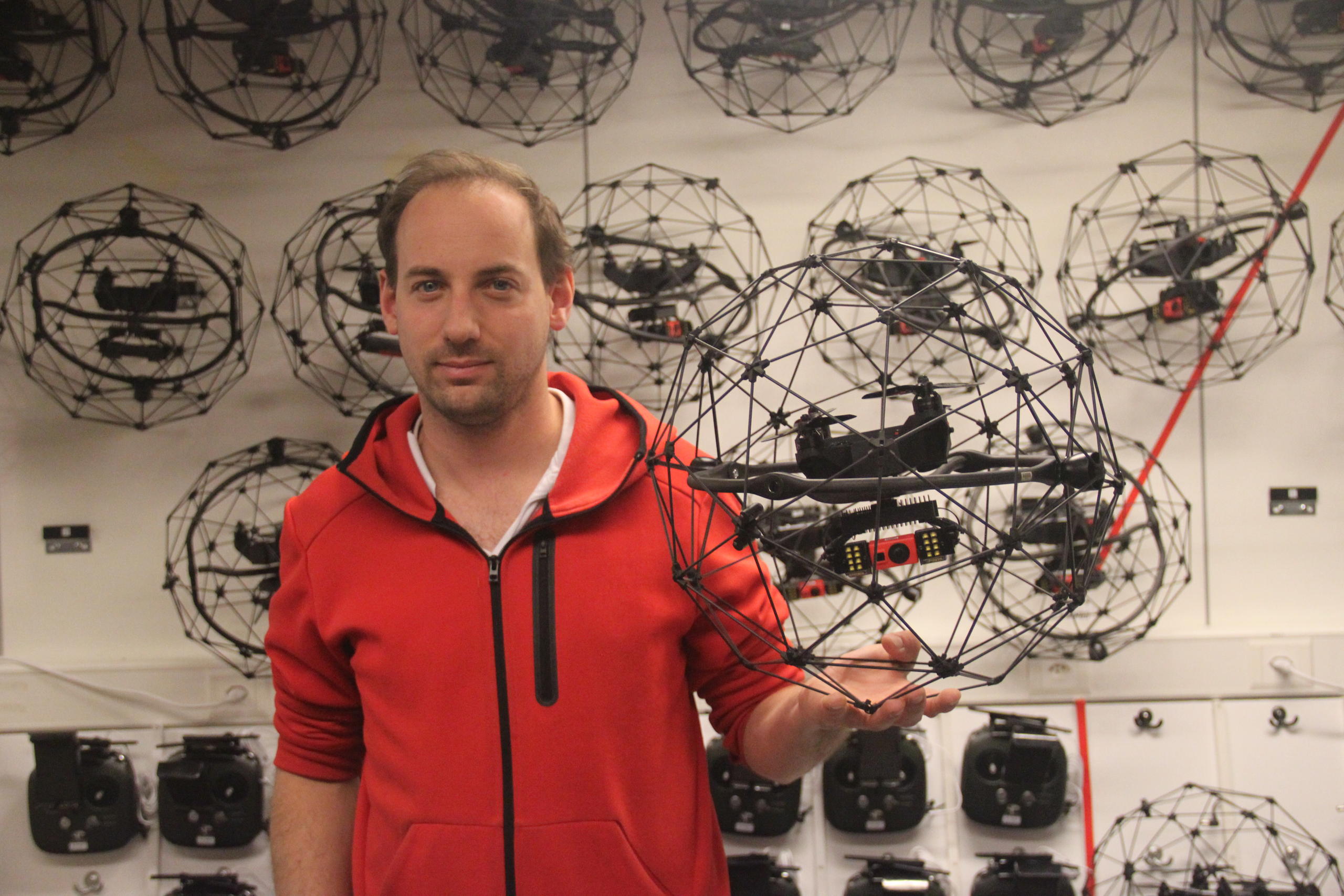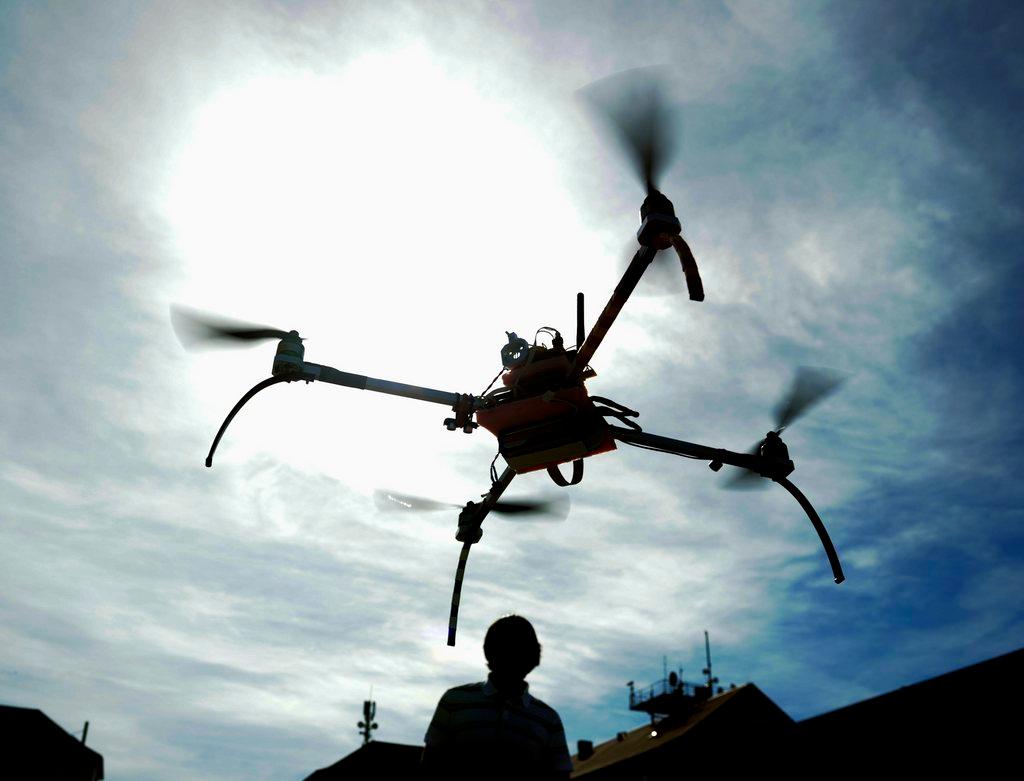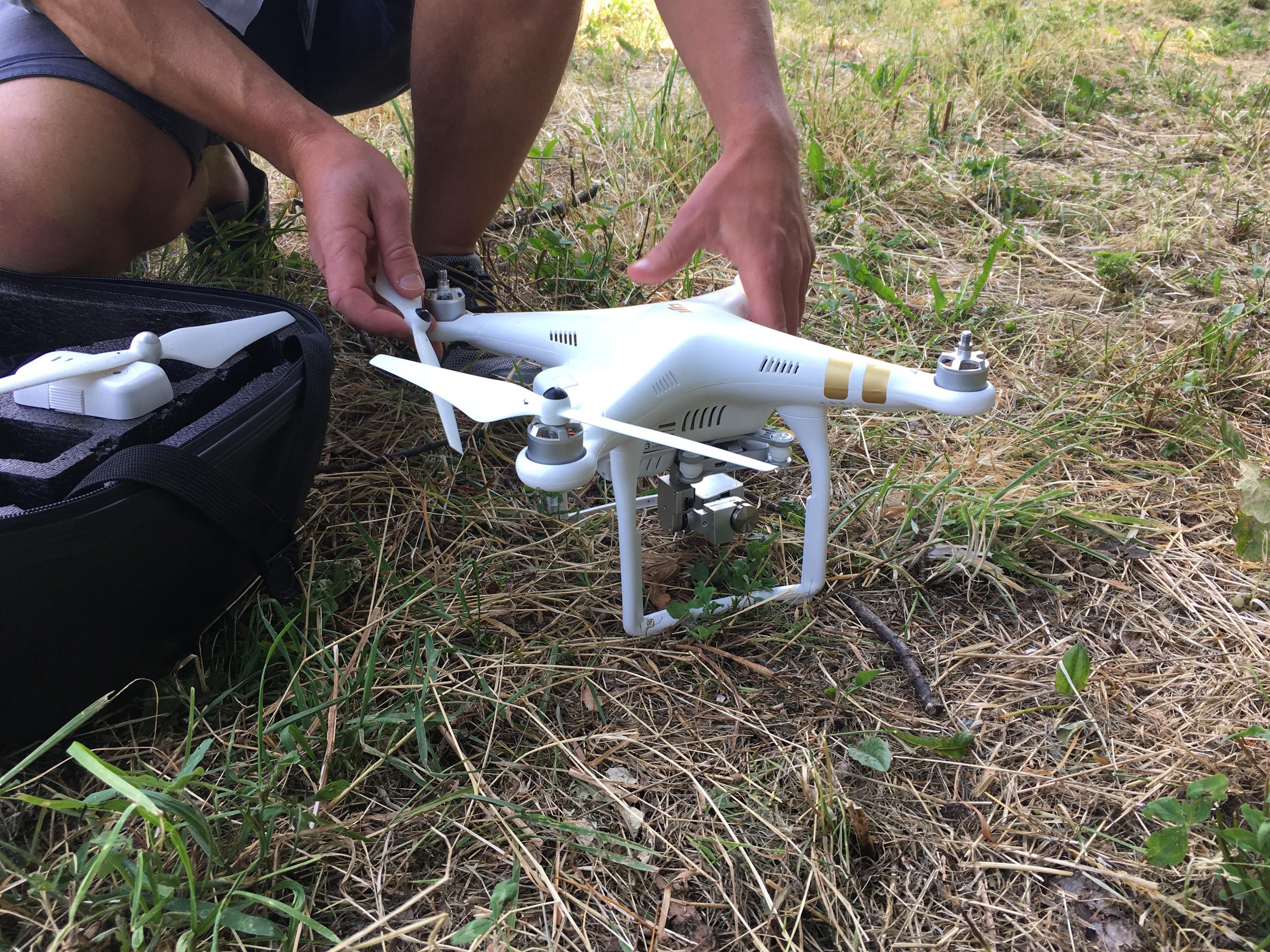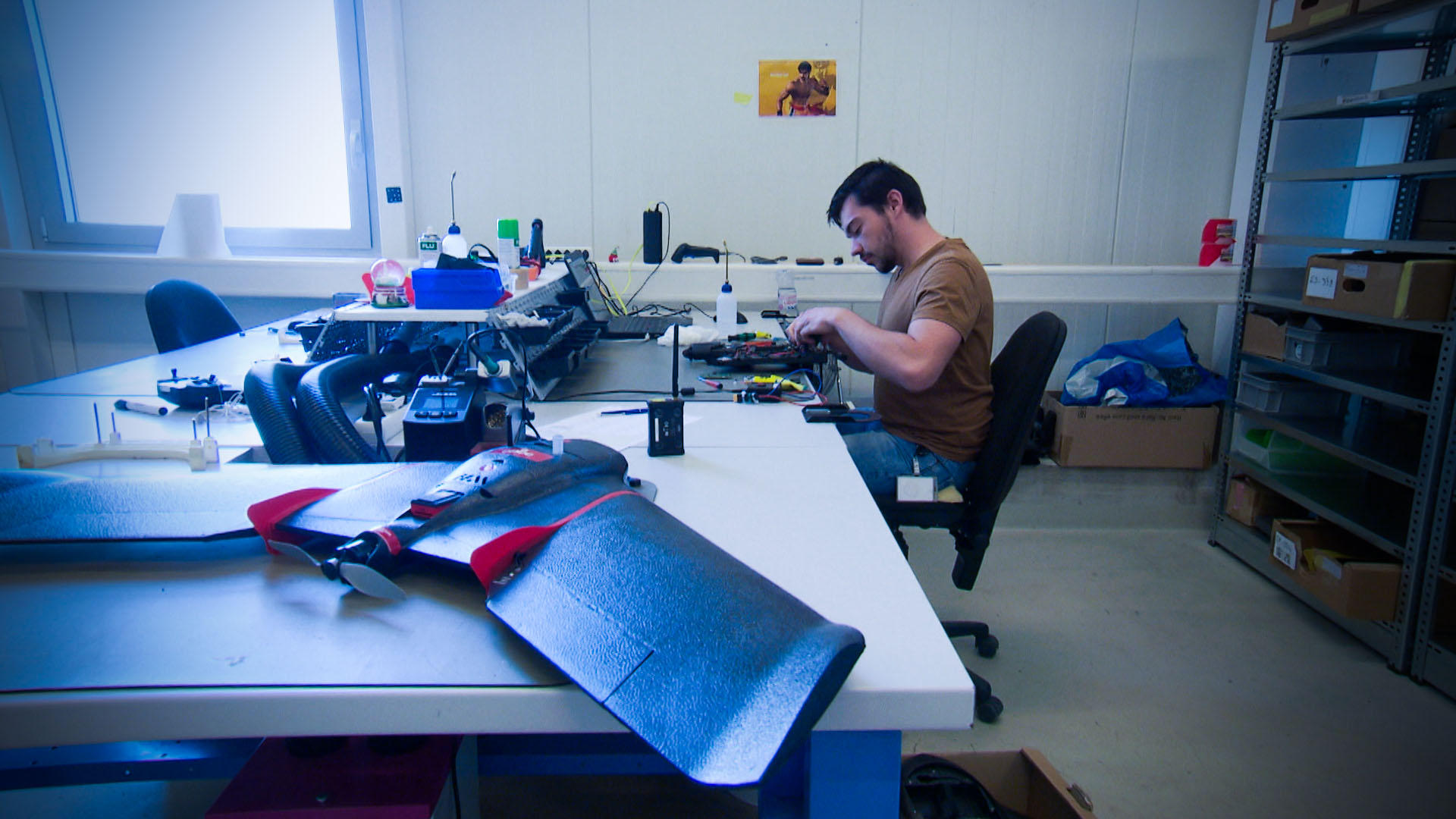Startup makes life-saving robots inspired by flies

The drones of Lausanne start-up Flyability can reach inaccessible areas, reducing not only costs but also the risk of a fatal accident. The flying robots have quickly become one of the success stories and symbols of Switzerland’s “Drone Valley”.
“After the earthquake in Haiti [in 2010] and the nuclear catastrophe at Fukushima [in 2011] it became clear that robots weren’t able to penetrate difficult environments to examine the situation or to check for victims. We said to ourselves that it had to be possible to make a robot that could get into isolated places with many obstacles and tight spaces,” says Patrick Thévoz.
So in 2014 Thévoz and his cousin Adrien Briod founded FlyabilityExternal link in Lausanne. They had both recently graduated with a Masters in microtechnology from the Swiss Federal Institute of Technology Lausanne (EPFL). Thévoz then worked as a business strategy consultant and Briod did a doctorate in flying robots. These two experiences were perfect for creating a successful start-up, a technologically innovative company able to expand rapidly.
“For our initial research we were inspired by insects – in particular flies,” Thévoz explains. “We spent several months trying to understand how they manage to fly in particularly difficult environments, to survive collisions, to not lose their bearings and to find a way out. We concluded that we needed to come up with an object that was quite small and light that could correct strong disturbances, react to collisions and keep a high level of flight stability.”

The “fly” they invented is called Elios, a drone 40cm in diameter and weighing 700 grams (1.5lb), with a round carbon-fibre shell, an LED illumination system, a high-resolution video camera and a thermal camera which, among other things, can pick out a human body.
The device, guided by tablet, can move in temperatures of 0-50°C (32-122°F) and survive collisions at a velocity of up to four metres a second.
“We soon realised that there were more possibilities to use our drone in the industrial sector than in the humanitarian sector since, fortunately, natural catastrophes are rare. When we published the first video of the drone, we noticed a considerable interest for industrial reconnaissance flights, above all from companies active in the fields of chemicals, oil, electricity or canalisation,” he said.
Reduced risks
In 2015, one year after its birth, the start-up won first prize, worth CHF1 million ($1 million), in the “Drones for GoodExternal link” competition held in Dubai to reward the best development project for a drone that improves daily life, serving the population or the environment. This was an ideal launching pad for the young company to make itself known internationally and attract the necessary funding to market its product.
The journey from the first prototypes to a commercial product was not without obstacles, Thévoz admits, but today Flyability already has over 300 clients worldwide. Its drone is mainly used for inspecting industrial plants, which have to be checked regularly. Elios can get into hard-to-reach places, providing precise information on possible cracks, corrosion or other damage caused by time, natural phenomena or chemical substances.
Its use is therefore not purely humanitarian but often means human lives aren’t put at risk. “There are numerous facilities where human inspections involve a major risk of accidents or exposure to gases or other substances that are hazardous to health, such as refinery tanks or a steam generator at a nuclear power plant. Last year, for example, one of our drones was used to inspect an electrical installation after several people died when scaffolding collapsed that had been built for human inspection.”
Safety standards
Now employed in dozens of countries, Elios has managed to carve out an international niche.
“Today our competition is mostly scaffolding and human inspections,” Thévoz says. So far the strongest demand has come from the United States and Europe, but also from several emerging countries, particularly in Asia.
“In countries like China there’s a huge industrial infrastructure which requires inspections, and there’s a growing desire to apply safety standards for employees which are approaching Western standards.”
But their drone is not only of interest to the industrial sector. Flyability’s clients include, for example, police forces, such as the elite French unit RAID, specialised in operations against kidnapping and terrorism. Or firefighters and representatives of insurance companies, who have to enter a building after a fire to assess liability or damage.
However, the company does not intend to sell its flying robots for military purposes. “We don’t want them to serve as weapons but as observation instruments to help prevent people from exposing themselves to danger,” Thévoz explains.
Drone Valley
One of the main challenges for Thévoz and Briod is that of continually adapting the start-up structure to the rapid growth of business and staff – there are now about 70 employees in the slightly cramped premises of the Lausanne office.
EPFL played a big role in the development of the company, not only in the doctoral work which resulted in the first prototype of the drone.
“EPFL has also played an incubator role for us as it offers various programmes that allow students and graduates to get a start-up up and running more easily. And even today we can collaborate with the institution for fundamental research projects. What’s more, it represents a huge magnet that attracts talented people who can be recruited, entrepreneurs with whom one can exchange experiences and a real ecosystem for start-ups like ours,” Thévoz says.
In just a few years Switzerland’s “Drone Valley”, which now comprises about 80 companies, has grown around EPFL as well as the federal technology institute ETH Zurich. Today, Flyability is one of the main symbols of its success.
“It’s clearly an advantage to have around us several companies active in the same sector with which we can collaborate, but there’s also a spirit of emulation,” Thévoz points out. “The existence of a Drone Valley also strengthens the credibility of the companies and the trust of investors and clients in our work.”

More
Welcome to the Drone Valley
(Translated from Italian by Thomas Stephens)

In compliance with the JTI standards
More: SWI swissinfo.ch certified by the Journalism Trust Initiative














You can find an overview of ongoing debates with our journalists here . Please join us!
If you want to start a conversation about a topic raised in this article or want to report factual errors, email us at english@swissinfo.ch.